MELHOR FILME
HOW GREEN WAS MY VALLEY
How Green Was My Valley (Como era verde o meu vale) é um filme estadunidense de 1941, do gênero drama, dirigido por John Ford e com roteiro baseado no romance de mesmo nome de Richard Llewellyn.
Aos 60 anos, Huw Morgan relembra sua vida quando garoto em uma pequena cidade mineradora do País de Gales no início do século XX. Suas lembranças revelam a desintegração da sua família, seus sentimentos e os problemas daqueles tempos.
Huw Morgan vive sua infância na cidade mineradora de Rhondda Valley com seus pais, quatro irmãos e uma irmã. Todos os homens da família são trabalhadores nas minas de carvão. Devido ao fechamento de uma indústria metalúrgica, muitos operários desempregados vão para as minas e aceitam pagamentos menores, o que diminui os salários em geral e leva a que os trabalhadores entrem em greve e, depois, formem um sindicato. A irmã de Huw, Angharad, se apaixona pelo pastor recém-chegado à cidade. Apesar de correspondida, o pastor prefere permanecer fiel à Igreja e ela acaba casando com o filho do proprietário da mina. As dificuldades no trabalho continuam e dois dos irmãos de Huw resolvem emigrar para a América. Huw vai para uma escola em outra cidade e sofre com os alunos esnobes e um professor autoritário.
A intenção dos produtores era realizar as filmagens no País de Gales, mas isso não foi possível por causa da Segunda Guerra Mundial.
O filme foi realizado em branco e preto porque as cores das flores das locações em Santa Mônica, no sul da Califórnia, não coincidiam com a cor das flores do País de Gales.
O filme levou apenas duas semanas para ser realizado.
Qu'elle était verte ma vallée (How Green Was My Valley) est un film américain réalisé par John Ford, sorti en 1941, d'après le roman de Richard Llewellyn.En réalisant Qu’elle est verte ma vallée, qui raconte la jeunesse d’un Gallois aux temps des mines, John Ford quitte le genre du western. Ce n’est pas pour autant qu’on ne retrouve pas le thème préféré de Ford, à savoir la vie en communauté.
Il nous peint avec grande tendresse une famille du XVIII° siècle et rend ses personnages infiniment humains et proches. Comme dans ses meilleurs westerns, les personnages vont et viennent entre le monde extérieur (école, mine) et le lieu clôt mais rassurant de la maison. La famille, très ancrée dans certaines valeurs, fait face aux bouleversements de leur siècle (industrialisation, chômage et syndicalisme ; départ pour l’Amérique ; éducation à l’école). L’abondance d’éléments, de personnages, de rebondissements, la durée des évènements et la structure en flash-back avec voix-off d’un narrateur donnent au film un aspect très romanesque et en font une véritable fresque (il est d’ailleurs basé d’un livre).
Ford filme le tout avec génie et offre une mise en scène pleine de grâce, dans un noir et blanc sublime (mémorable plan dans lequel le jeune héros essaye de marcher à nouveau, en haut de la colline devant un champ lumineux). Les scènes dans la mine ou les vues des paysages sont également très beaux ; chaque plan semble être le plan parfait. En conclusion, ce film très nostalgique est doté d’un charme modeste, qui évoque nos souvenirs d’enfance et un paradis perdu ; néanmoins, il souffre de son classicisme et de quelques longueurs.
How Green Was My Valley is a 1941 drama film directed by John Ford. The film, based on the 1939 Richard Llewellyn novel, was produced by Darryl F. Zanuck and written by Philip Dunne. The film stars Walter Pidgeon, Maureen O'Hara, Anna Lee, Donald Crisp, and Roddy McDowall. It was nominated for ten Academy Awards, winning five and beating out for Best Picture such classics as Citizen Kane, The Maltese Falcon, Suspicion and Sergeant York.
The film tells the story of the Morgans, a close, hard-working Welsh family at the turn of the twentieth century in the South Wales coalfield at the heart of the South Wales Valleys. It chronicles a socio-economic way of life passing and the family unit disintegrating.
In 1990, How Green Was My Valley was selected by the Library of Congress for preservation in the United States National Film Registry as being "culturally, historically, or aesthetically significant".
The story is told through the eyes and with the voice-over narration of Huw Morgan (Roddy McDowall), now a middle-aged man leaving his home, a mining town in the Rhondda Valley, and recalling the events that most impressed his younger self. The boy Huw is played by Roddy, but the voice-over is that of unseen actor Irving Pichel.
Huw's first memories are of the marriage of his brother, Ivor (Patric Knowles), and the burgeoning, unspoken and ill-fated romance of his sister, Angharad (Maureen O'Hara), with the new preacher, Mr. Gruffydd (Walter Pidgeon). Because of the forbidden nature of the romance, Angharad marries another man (whom she later divorces), and Mr. Gruffydd leaves the chapel in disgust after being subjected to untrue town gossip - his romance with Angharad is never consummated, nor do they ever marry. Still too young to work in the local coal mine like his father, Gwilym (Donald Crisp), and his five older brothers, Huw senses the seriousness of an imminent strike by the rift it creates between his father and the other boys when three of them move out of the family abode.
During the tensions of the strike, Huw saves his mother (Sara Allgood) from drowning and in so doing temporarily loses the use of his legs. As Gruffydd aids in Huw's recovery, insisting on a positive attitude, he suggests that it is only the first of many trials the boy will have to face. Other subplots are explored in the film, which concludes with the death of Gwilym Morgan in a mining accident.
MELHOR ATOR
GARY COOPER, pelo filme SERGEANT YORK
















.jpg)
















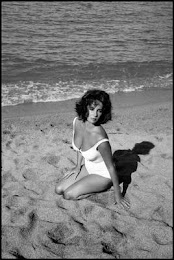

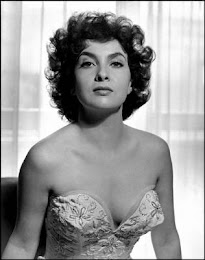





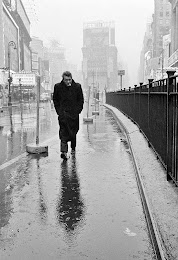
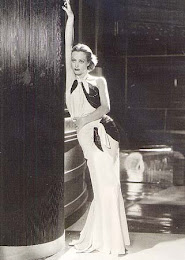










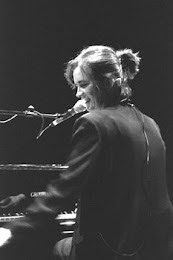




Nenhum comentário:
Postar um comentário